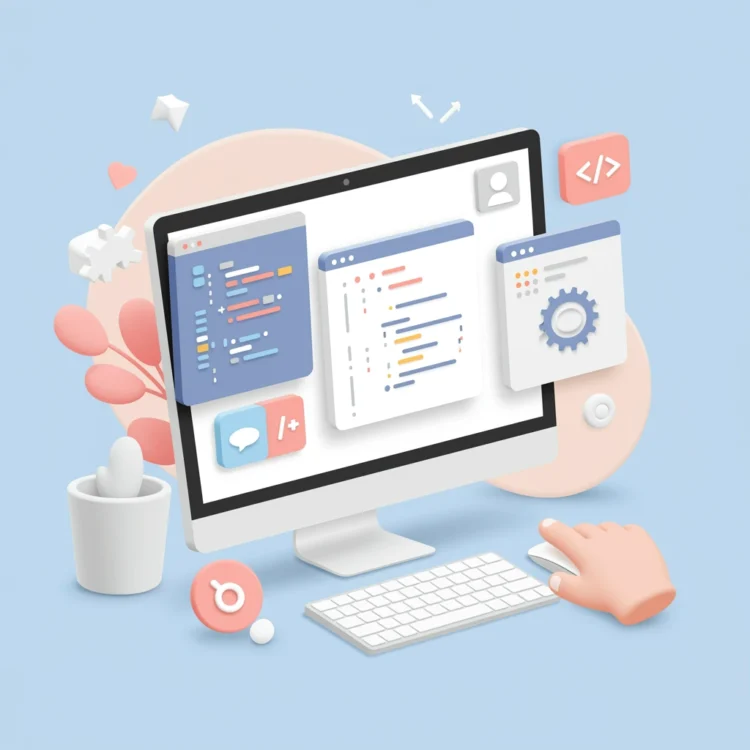The Messy State of Google Search Rank Tracking
- 24.10.2025
The European Union has announced a new piece of legislation that will transform the design and development of web applications, websites, and digital services throughout Europe. The new European Accessibility Act (EAA) aims to ensure that technology is accessible to everyone, including individuals with disabilities.
The first European Accessibility Act was adopted in 2019 to improve the accessibility of products and services across member states. It aims to break down barriers that prevent people with disabilities from fully participating in society and the digital economy. Under the Act, certain products and services must be made accessible according to common EU-wide accessibility requirements. These include:
While the original Act came into force in 2019, businesses have had a transition period to adapt to its requirements. Now that the newest act is in place, from 28th June 2025, any new products or services must ensure full compliance or risk incurring legal penalties and reputational damage.

Businesses offering digital services in the EU will need to comply with guidelines such as WCAG 2.2 Level AA to make their platforms accessible. If your digital product is based in the UK, the EAA may still affect you if you provide services to EU customers or operate within the EU market. Although the UK is no longer part of the EU, businesses targeting EU users must comply with these regulations to avoid penalties and maintain market access.
The EAA is set to significantly disrupt the digital and tech ecosystem, ushering in a new era of inclusive design and development. Here’s how:
For years, accessibility has often been treated as an afterthought, something to consider after launch or when a complaint arises. The EAA shifts this mindset, making accessibility a legal obligation rather than a best practice.
Unlike earlier directives like the Web Accessibility Directive (which applied mainly to public sector websites), the EAA applies to the private sector, affecting commercial web apps, e-commerce platforms, and digital services. This broader scope means millions of companies, large and small, must now assess and upgrade their digital offerings.
The demand for accessibility professionals such as UX/UI designers, QA testers, compliance consultants, and developers skilled in ARIA (Accessible Rich Internet Applications), semantic HTML, and WCAG, is expected to skyrocket. Companies may need to retrain existing teams or hire external experts to fill these critical roles.
Failure to comply with the EAA could result in legal action, including fines, bans, and public naming and shaming. In addition, companies risk losing consumer trust and facing backlash on social media. Accessibility will become a core compliance issue, similar to data protection under the GDPR.
Meeting the EAA’s requirements will involve a comprehensive review and overhaul of digital strategies and infrastructure. Here are key steps businesses can take:
Identify which of your services, products, or platforms fall under the Act. If your business provides digital services (websites, mobile apps, e-commerce platforms, etc.) to consumers in the EU, you’ll likely be subject to the legislation.
Perform a thorough accessibility audit of your digital platforms using both automated tools and manual testing with assistive technologies such as screen readers or voice input. Look for issues such as:
The EAA references the WCAG 2.2 guidelines, which are the global standard for digital accessibility. Companies should ensure their digital platforms meet Level AA conformance, which includes:
Under the Act, websites and mobile apps should include an accessibility statement outlining compliance status, known issues, and contact information for feedback. This statement should be easy to find and written in plain language.
Ensure that users with disabilities can contact support teams using accessible communication options, such as live chat, text-to-speech services, or relay calls, where appropriate.
While the EAA is a legal requirement, it also presents an opportunity for businesses to grow:
Navigating the technical and legal landscape of the European Accessibility Act can be overwhelming, but you don’t have to go it alone. Appoly, a leading mobile app development company UK, specialises in designing and building websites, web apps, and mobile apps that are fully accessible and EAA-compliant.
At Appoly, we can update your application to ensure it complies with the EAA and is easily accessible for people with disabilities. For more information on how we can assist you, please contact us.